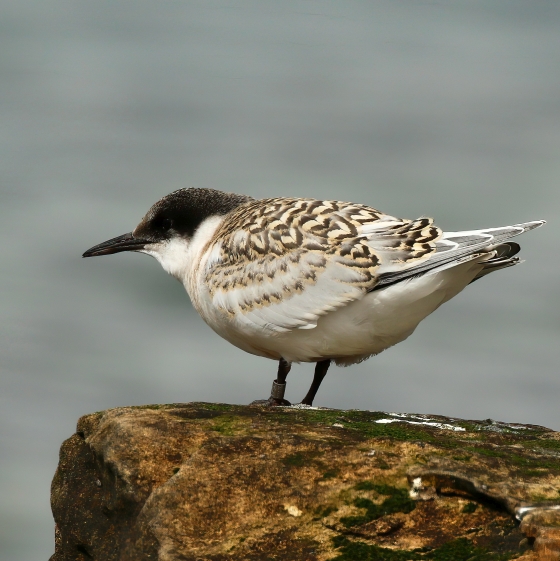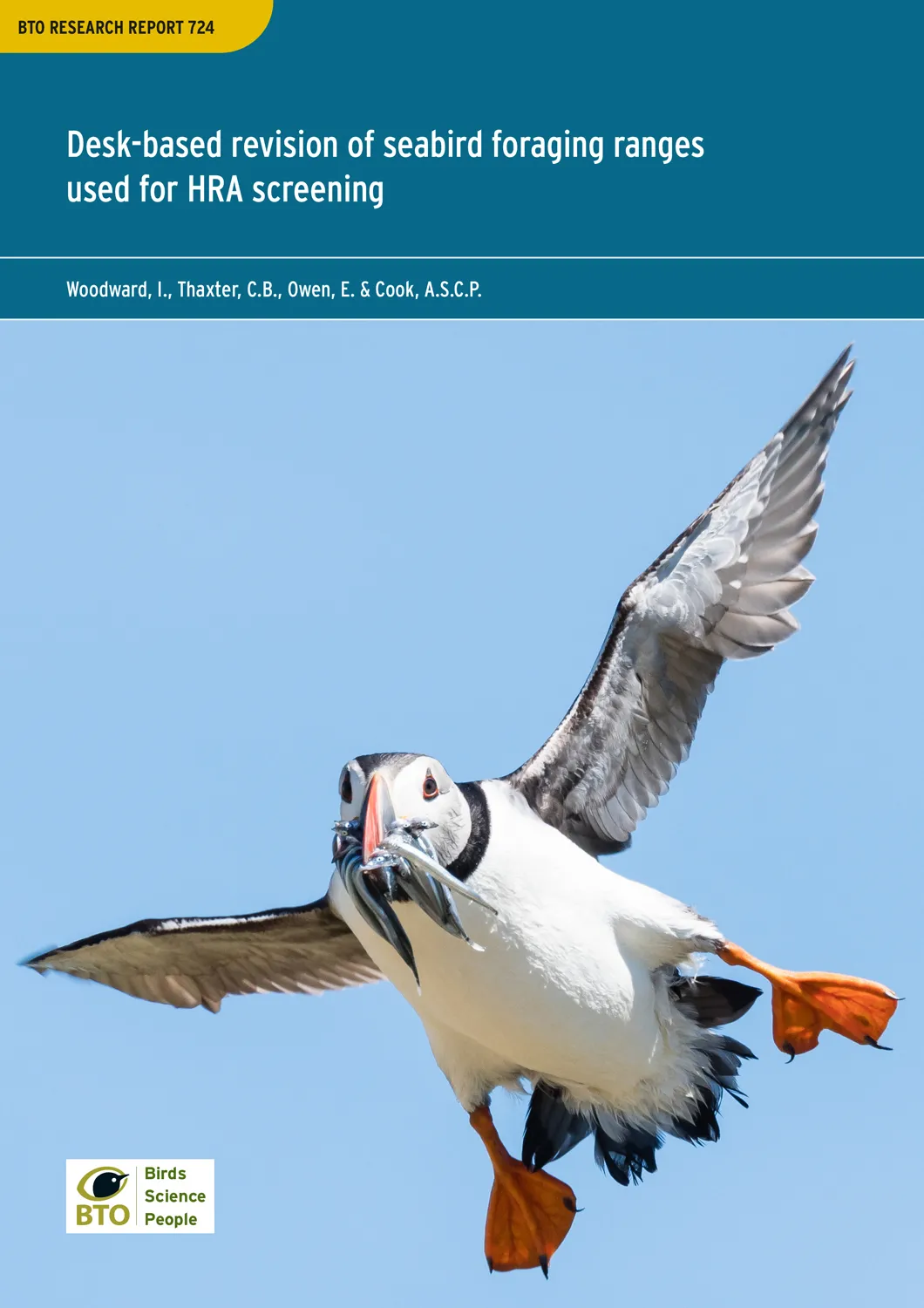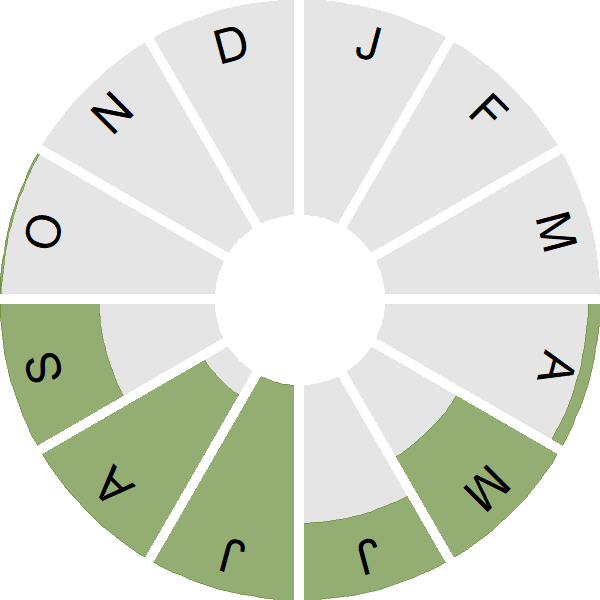Roseate Tern

Introduction
With its dark bill, silvery-grey upperparts and rosy-washed breast, the Roseate Tern is one of the UK's rarest breeding birds.
The Roseate Tern is a very marine bird, spending most of its life at sea. It nests in colonies on low-lying rocky islets. The small British and Irish breeding populations are highly localised, with few pairs found nesting away from a handful of well-known sites.
Roseate Tern is a summer visitor to the UK, arriving in April and departing for West African during September. It is Red-listed in the UK as a Bird of Conservation Concern.

Key Stats
Identification
ID Videos
This section features BTO training videos headlining this species, or featuring it as a potential confusion species.
Tern Identification Workshop Part 2: Roseate, Sandwich and Little Terns
Songs and Calls
Call:
Status and Trends
Conservation Status
Population Change
Roseate Tern numbers declined substantially between the 1969–70 Census and Seabird 2000 (1998–2002), from 955 occupied nests to just 56 nests (JNCC 2022). The species is monitored by the Rare Breeding Birds Panel and, as a UK breeding species, it is now almost exclusively restricted as a breeding species to one island site in Northumberland. This site hosted 122 of the 125 breeding pairs recorded in 2019 and the 25 year trend is stable (Eaton et al. 2021).
Distribution
Roseate Tern is a species of conservation concern owing to historic population declines. At the time of Bird Atlas 2007–11 breeding was concentrated in just three colonies: Coquet Island in northeast England and Rockabill and Lady's Island Lake in the east of Ireland. More recently, Coquet Island has been devasted by the 2022 outbreak of avian influenza.
Occupied 10-km squares in UK
2008–11
or view it on Bird Atlas Mapstore.
European Distribution Map
Distribution Change
In Britain, colony loss has been greatest in the Firth of Forth, where there has been competition with Herring Gulls, low productivity, intermittent breeding and emigration to other areas. In Ireland, losses have been greatest at Strangford Lough and along the west coast.
Change in occupied 10-km squares in the UK
from 1968–72 to 2008–11
or view it on Bird Atlas Mapstore.
Seasonality
Roseate Terns is a scarce breeding species, present from May onwards; some birds seen on autumn passage into August and September.
Weekly pattern of occurrence
The graph shows when the species is present in the UK, with taller bars indicating a higher likelihood of encountering the species in appropriate regions and habitats.

Movement
Britain & Ireland movement
Foreign locations of birds ringed or recovered in Britain & Ireland
Dots show the foreign destinations of birds ringed in Britain & Ireland, and the origins of birds ringed overseas that were subsequently recaptured, resighted or found dead in Britain & Ireland. Dot colours indicate the time of year that the species was present at the location.
- Winter (Nov-Feb)
- Spring (Mar-Apr)
- Summer (May-Jul)
- Autumn (Aug-Oct)

European movements
EuroBirdPortal uses birdwatcher's records, such as those logged in BirdTrack to map the flows of birds as they arrive and depart Europe. See maps for this species here.
The Eurasian-African Migration Atlas shows movements of individual birds ringed or recovered in Europe. See maps for this species here.
Biology
Productivity and Nesting
Nesting timing
Egg measurements
Clutch Size
Survival and Longevity
Survival is shown as the proportion of birds surviving from one year to the next and is derived from bird ringing data. It can also be used to estimate how long birds typically live.
View number ringed each year in the Online Ringing Report.
Lifespan
Survival of adults
Biometrics
Wing length and body weights are from live birds (source).
Ring Size
Classification, names and codes
Classification and Codes
- Order: Charadriiformes
- Family: Laridae
- Scientific name: Sterna dougallii
- Authority: Montagu, 1813
- BTO 2-letter code: RS
- BTO 5-letter code: ROSTE
- Euring code number: 6140
Alternate species names
- Catalan: xatrac rosat
- Czech: rybák rajský
- Danish: Rosenterne
- Dutch: Dougalls Stern
- Estonian: roosatiir
- Finnish: ruusutiira
- French: Sterne de Dougall
- Gaelic: Steàrnag-stiùireach
- German: Rosenseeschwalbe
- Hungarian: rózsás csér
- Icelandic: Roðaþerna
- Irish: Geabhróg Ríoga
- Italian: Sterna di Dougall
- Latvian: sartais zirinš
- Lithuanian: rožine žuvedra
- Norwegian: Rosenterne
- Polish: rybitwa rózowa
- Portuguese: trinta-réis-róseo / gaivina-rosada
- Slovak: rybár štíhlozobý
- Slovenian: rožnata cigra
- Spanish: Charrán rosado
- Swedish: rosentärna
- Welsh: Môr-wennol Wridog
Research
Causes of Change and Solutions
Causes of change
Recent increases at the main UK breeding site in Northumberland have been driven partly by immigration from Rockabill and Lady 's Island Lake in the Republic of Ireland (Seward et al. 2019 cited in Eaton et al. 2021), but the proportion of breeding birds that came from the Northumberland colony itself has risen from 20% to 60% between 2006 and 2019 (Eaton et al. 2021). However, the UK population remains well below the level in 1969–70. Longer term declines of the species are thought to have been driven mainly by hunting on its wintering grounds (Cabot 1996) although other factors may be responsible for local breeding declines including habitat loss, predation, disturbance and competition for nest sites (Avery et al. 1995, JNCC 2012). Intensive management programmes have been put in place to help protect the species including wardening at breeding sites and provision of nest boxes, and attempts to reduce the pressures affecting the wintering areas (Avery et al. 2010).
Publications (4)
Desk-based revision of seabird foraging ranges used for HRA screening
Author: Woodward, I., Thaxter, C.B., Owen, E. & Cook, A.S.C.P.
Published: 2019
A key step in understanding the possible impacts of a proposed windfarm development is to identify potential interactions between seabird breeding colonies and the proposed development areas. Such interactions are typically assessed using generic information on foraging ranges, derived from academic studies. This report uses the latest data to provide updated estimates of foraging range, which will help to ensure that the best available information is available when new developments are being considered.
01.12.19
BTO Research Reports

The status of the UK’s breeding seabirds
Author: Stanbury, A.J., Burns, F., Aebischer, N.J., Baker, H., Balmer, D., Brown, A.F., Dunn, T., Lindley, P., Murphy, M., Noble, D.G., Owens, R. & Quinn, L.
Published: 2024
Five seabird species are added to the Birds of Conservation Concern Red List in this addendum to the 2021 update, bringing the total number of Red-listed seabird species to 10, up from six since seabirds were last assessed. The Amber List of seabirds moves from 19 to 14 species, and the Green List increases from one to two species.
29.09.24
Papers

Seabird Population Trends and Causes of Change: 1986–2023
Author: Harris, S.J., Baker, H., Balmer, D.E., Bolton, M., Burton, N.H.K., Caulfield, E., Clarke, J.A.E., Dunn, T.E., Evans, T.J., Hereward, H.R.F., Humphreys, E.M., Money, S. and O’Hanlon, N.J.
Published: 2024
This report presents the latest seabird population trends in breeding abundance and productivity using data from the Seabird Monitoring Programme (SMP).The report documents changes in the abundance and productivity of breeding seabird species in Britain and Ireland from 1986 to 2023, and provides a detailed account of the 2021, 2022 and 2023 breeding seasons. This report includes both inland and coastal populations and trends from the Channel Islands, England, Isle of Man, Northern Ireland, Scotland, Wales and the Republic of Ireland, which are presented where sufficient data are available. The results from this report are used more broadly to assess the health of the wider environment, to inform policy and for conservation action.
21.11.24
Reports SMP Report

Impacts of highly pathogenic avian influenza on seabird populations in the North Sea are detectable in sea-watchers’ migration counts
Author: Macgregor, C.J., Gillings, S., Balmer, D.E., Boersch-Supan, P.H., Harris, S.J., Hereward, H.F.R., Humphreys, E.M., Pearce-Higgins, J.W., Taylor, R.C., Troost, G. & Atkinson, P.W.
Published: 2024
BTO research reveals that seabird population declines due to High Pathogenicity Avian Influenza (HPAI) can be detected using data collected by volunteer seawatchers.
28.12.24
Papers

More Evidence
More evidence from Conservation Evidence.com
Partners
Citing BirdFacts
If you wish to cite particular content in this page (e.g. a specific value) it is best to use the original sources as linked in the page. For a more general citation of the whole page please use: BTO (20XX) BirdFacts Species: profiles of birds occurring in the United Kingdom. BTO, Thetford (www.bto.org/birdfacts, accessed on xx/xx/xxxx).

